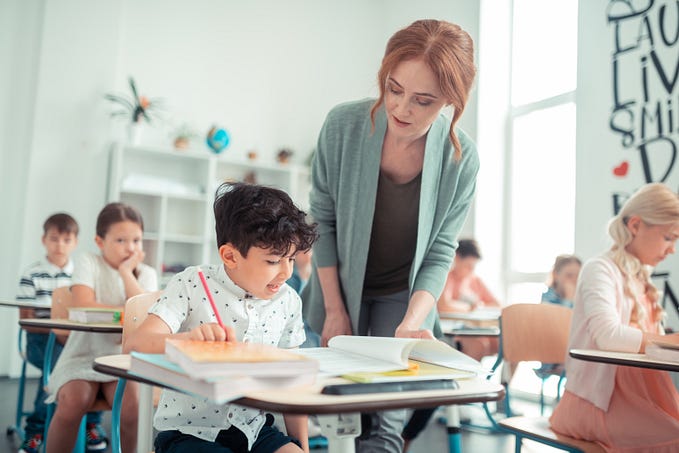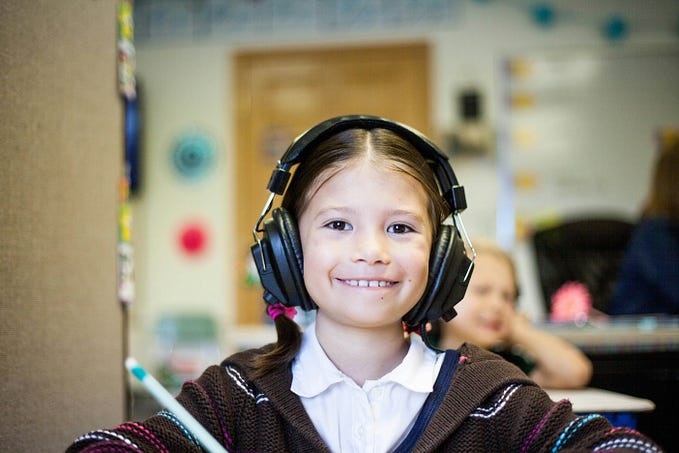Instructional Routines in K-5 Mathematics

By Dr. Lanette Trowery, Sr. Director of Learning at McGraw Hill School and Margaret Bowman, Academic Designer at McGraw Hill School
Most teachers establish classroom routines during the first few days of school. These routines can help students understand expected behaviors and reduce the cognitive demands of learning new concepts (Leinhardt, Weidman, & Hammond, 1987). Well-practiced and understood classroom routines allow students to maintain focus on their learning without diverting attention to the more general rules and activities (Lampert, Beasley, Ghousseini, Kazemi, & Franke, 2010; Leinhardt et al., 1987).
As defined by Leinhardt and colleagues (1987):
“Routines… are fluid, paired, scripted segments of behavior that help movement toward a shared goal. Routines can have explicit descriptors, can be modeled or, more commonly, can simply evolve through shared exchange of cues” (p. 136).
When implementing routines, it is critical that students are aware of and involved in the learning process, with clear roles and expectations (Bulgren & Scanlon, 1998).
How Routines Support Instruction
According to Yinger (1979), “Instructional routines are methods and procedures established by the teacher to carry out specific instructional moves” (p. 166). Instructional moves are steps a teacher takes when conducting and carrying out activities. Yinger gives examples such as, “giving instructions, questioning, presenting information, monitoring, evaluating student performance, and offering feedback” (p. 165).
For example, several different routines can be used to support instructional dialogue, a practice in which “an explanation is co-constructed by the teacher and students in the class during an instructional conversation” (Lampert et al. 2010, p. 131).
Pedagogical Content Knowledge and Instructional Routines
As teachers employ routines, they will need to draw on a deep understanding of content knowledge and pedagogical strategies of their subject matter to choose effective instructional moves. Combining these two bodies of knowledge, Shulman (1986) characterized the idea of pedagogical content knowledge (PCK) as the “blending of content and pedagogy into an understanding of how particular topics, problems or issues are organized, represented and adapted to the diverse interests and abilities of learners, and presented for instruction” (p. 8).
💡 Research Spotlight: Studies have shown that students in classrooms with teachers having higher proficiency in PCK performed significantly better on large-scale assessments than students whose teacher was not as strong in PCK (Hill, Rowan, & Ball, 2005; Knauss, Baumert & Blum, 2008). Knauss, Baumert, and Blum (2008) also found that PCK had stronger effects on student learning and outcomes than simply a strong understanding of the content alone.
Pedagogical content knowledge allows teachers to become fluent in the instructional moves that make up instructional routines, thus providing the structure and organization that support student learning. For instructional routines, teachers choose and use effective instructional moves that make those routines effective. Here are some examples of effective instructional moves:
- Uncovering content misconceptions in student ideas
- Connecting ideas between content concepts
- Breaking apart difficult topics or ideas and scaffolding them for students
- Drawing on student ideas, partial understandings, and conjectures to further learning
(Ball and Forzani, 2010; Frey & Fisher, 2010; Hiebert & Morris, 2012; Hill, Rowan & Ball, 2005).
Instructional Routines in Mathematics
While some routines maintain classroom behaviors, others may be more subject- or content-specific. Here, PCK plays an important role, as Berry (2018) notes when he describes routines known to support the development of mathematical proficiency, which include conceptual understanding, strategic competence, adaptive reasoning, productive disposition, and procedural fluency. He states,
“If the goal in mathematics teaching and learning is to support student success with mathematical proficiency, then we must be explicit about using instructional routines that focus on student engagement in activities that support reasoning and sensemaking, communication with and about mathematical ideas, making meaningful connections, building procedural fluency from conceptual understanding, and productive struggle.”
Types of Instructional Routines to Use in Your Math Classroom
Our core math program, Reveal Math K-5, provides three types of instructional routines: Sense-Making Routines, Number Routines, and Math Language Routines. By establishing these routines early on and adapting them as students progress to the next grade level, teachers can help reduce cognitive load, and students can focus on their mathematical thinking and learning. The following are some of the instructional routines used throughout the program:
Sense-Making Routines. In order to become problem solvers in mathematics, students must understand the problem context, make sense of the issue at hand, and then find the tools needed to solve the problem. Here are a few examples of sense-making routines found in Reveal Math K-5:
- Notice and Wonder™. Developed at the Math Forum, the Notice and Wonder routine has teachers present students with an image or problem scenario without any questions, data, or answers to the problem. Students write or draw the things they notice and the things they wonder. The teacher can then engage students in a class discussion about the things they notice and wonder, and record their comments on the board. The teacher should allow for students’ comments to be non-mathematical in nature but should eventually want to steer the conversation to focus on mathematical wonderings.
- Numberless Word Problems. This routine requires students to look for relationships among the objects given in the problem and to talk with others about the things they notice. It begins by presenting a problem or image without any numbers. Teachers serve an important role in guiding students in this routine as they may be confused by the lack of numbers. The teacher should help widen student thinking about problems, beyond solving and numbers, and help students make connections to other students’ thinking and strategies.
Number Routines. The purpose of number routines is to develop a better sense of numbers and how they function. Without a solid foundation in number sense, it is difficult to learn and understand geometry and statistics, for example. Using number routines, students are able to make more sense of math rather than following rigid sets of rules (Shumway, 2011). Here are a few examples of the number routines found Reveal Math K-5:
- About How Much? Students build estimating skills by explaining their strategies and then comparing and analyzing their estimates to the actual value.
- Break Apart/Decompose It. Students build flexibility with numbers by decomposing them, sharing their thinking, and discussing patterns.
- Find the Pattern, Make a Pattern. Students build efficiency by determining the rules for a given pattern, then continue the pattern or create a new pattern.
- Mystery Number. Students build mathematical reasoning and thinking by looking at clues one at a time, proposing possible solutions, and eliminating solutions that are no longer viable.
- Which Benchmark Is It Closest To? Students enhance rounding and reasoning skills by determining which benchmark a given number is closest to and explaining their reasoning.
- Would You Rather? Students build number sense and enhance decision-making by choosing between two options, both of which require mental math, and giving the rationale for their choice.
Math Language Routines. Mathematical language routines (MLRs) are structured but adaptable formats for amplifying, assessing, and developing students’ mathematical language. Here are a few examples of the language routines found in Reveal Math K-5, developed by the Stanford University UL/SCALE team:
- Stronger and Clearer Each Time. Students revise and refine their ideas and their verbal and written output.
- Collect and Display. Students’ oral words and phrases are collected into a reference for them to refer to later.
- Critique, Correct, and Clarify. Students analyze, reflect on, and develop a piece of writing that is not their own.
- Information Gap. Students communicate with partners or team members to convey missing pieces of necessary information.
- Co-Craft Questions and Problems. Students use conversation skills to generate, choose, and improve questions and problems before producing answers.
- Discussion Supports. Students have supported discussions about mathematical ideas, representations, contexts, and strategies.
For more background on the importance of instructional routines, and more examples of routines in Reveal Math K-5, see the full Reveal Math K-5 Research Foundations.

About the Authors

Lanette Trowery, Ph.D. is the Senior Director of the McGraw Hill Learning Research and Strategy Team.
Lanette was in public education for more than 25 years, working as a university professor, site-based mathematics coach, elementary and middle school teacher, mathematics consultant, and a professional learning consultant, before coming to McGraw Hill in 2014. She earned her Master’s and Doctorate from the University of Pennsylvania.
Lanette’s team, Learning Research and Strategy, serves as the center of excellence for teaching and learning best practices. Her team conducts market, effectiveness, and efficacy research into products to provide insights and recommendations to product development. They collaborate across internal teams, external experts, and customers to establish guiding principles and frameworks to move from theory to practice.

Margaret Bowman is an Academic Designer in the Mathematics Department at McGraw Hill.
Margaret earned her Bachelor of Science in Education from Ashland University with a teaching license in Middle Grades Education, and her Master of Education from Tiffin University. She was a middle school Math and Language Arts teacher for six years before joining the middle school team at McGraw Hill in 2012, writing and designing print and digital curriculum.
Margaret is also a Research Associate in the Research Laboratory for Digital Learning at The Ohio State University. She is nearing completion of a PhD in Educational Studies with an emphasis in Learning Technologies. Her past research and journal publications have focused on teachers’ value for using technology in the classroom and technology’s impact on student learning. Her current research examines how students’ use of technology can improve the value they have for mathematics and their expectations that they can succeed.
References
Ball, D. & Forzani, F. (2011). Teaching skillful teaching. Educational Leadership, 68(4), 40–45.
Berry, R. (2018, December). Thinking about Instructional Routines in Mathematics Teaching and Learning. Retrieved from https://www.nctm.org/News-and-Calendar/Messages-from-the-President/Archive/Robert-Q_-Berry-III/Thinking-about-Instructional-Routines-in-Mathematics-Teaching-and-Learning/
Bulgren, J. and Scanlon, D. (1998). Instructional routines and learning strategies that promote understanding of content area concepts. Journal of Adolescent & Adult Literacy, 41(4), 292–302.
Frey, N., & Fisher, D. (2010). Identifying instructional moves during guided learning. The Reading Teacher, 64(2), 84–95.
Hiebert, J. & Morris, A. (2012) Teaching, rather than teachers, as a path toward improving classroom instruction. Journal of Teacher Education, 63(2), 92–102.
Hill, H., Rowan, B., & Loewenberg Ball, D. (2005). Effects of teachers’ mathematical knowledge for teaching on student achievement. American Educational Research Journal, 42(2), 371–406.
Lampert, M., Beasley, H., Ghousseini, H., Kazemi, E., & Franke, M. (2010). Instructional explanations in the disciplines. In Using designed instructional activities to enable novices to manage ambitious mathematics teaching (pp. 129–141). Boston, MA: Springer US.
Leinhardt, G., Weidman, C., & Hammond, K. (1987). Introduction and integration of classroom routines by expert teachers. Curriculum Inquiry, 17(2), 135–176.
Shulman, L. (1987). Knowledge and teaching: Foundations of the new reform. Harvard Educational Review, 57(1), 1 –21.
Yinger, R. (1979). Routines in teacher planning. Theory into Practice, 18(3), 163–169.








